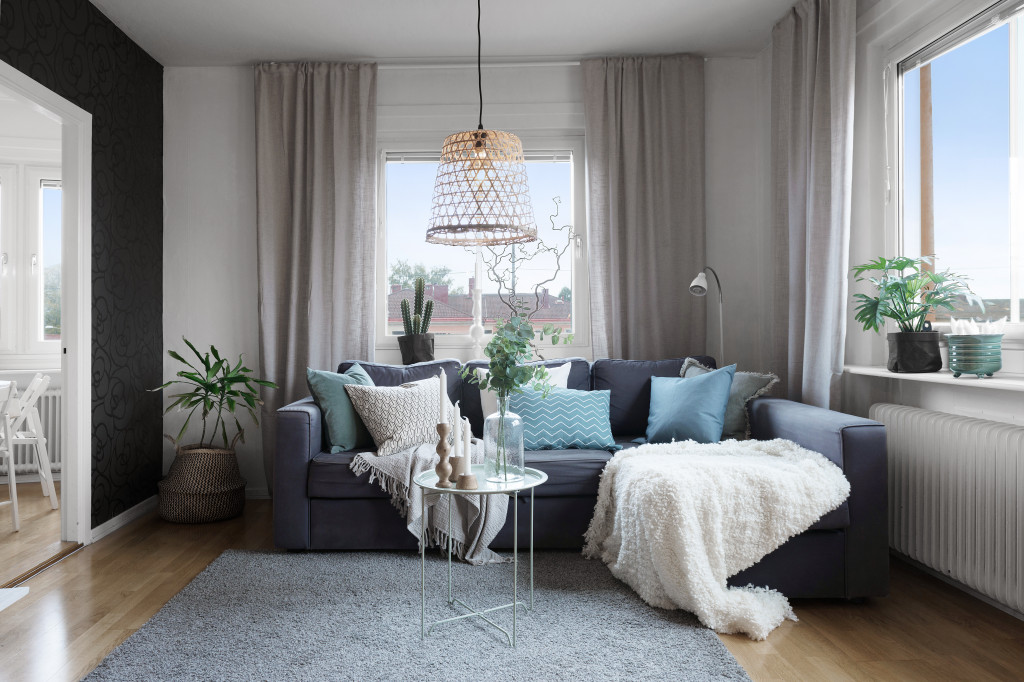Scandinavian architecture and interior design have reached global popularity over the years. The clean lines, integration of the surrounding environment, minimalistic design, and neutral colours work so well in different climates and locations. Countries in this region have also made big strides when it comes to sustainable design. And the Naturhus, or Nature House in English, is a perfect example.
A Naturhus, in a nutshell, is a home enclosed in a glass shell aka a greenhouse. While many homes in chilly places like the UK extend their homes by adding a conservatory, a Naturhus takes it to the extremes.
With the house wrapped by a glass enclosure, inhabitants benefit from a year-round warm climate and a host of other practical and aesthetic benefits. Continue reading to know more about this innovative and sustainable house design.
Overview of the Naturhus
The Naturhus is a sustainable building concept pioneered by eco-architect Bengt Warne. He built his first Naturhus in Stockholm, which was then adapted by Anders Solvarm and like-minded friends. Solvarm built his first Naturhus for his family and it’s now evolved into a self-sustaining sanctuary that feeds them, both in the form of food and energy.
The main elements of this building include:
- Passive solar heating – greenhouses are essential tools for growers as they provide the warmth and sunshine needed to grow crops year-round. With a home enclosed in a greenhouse, you’ll enjoy warm days through the winter without relying on electricity.
- Year-round garden – there are few crops that you can grow in the winter. Kitchen staples like tomatoes, lettuce, and herbs could succumb to frigid climates. If you enjoy year-round gardening with tropical and Mediterranean varieties, you’ll love living in a Naturhus.
- Self-contained ecological system – in simple terms, an automatic irrigation system where wastewater from the house gets pumped into the garden. The water will be filtered by the soil and the plants will receive nutrient-rich water.
- A modest, cozy home – the core of the Naturhus is the humble and inviting home. Whether it’s a cabin, cottage, or modern loft, its main purpose is privacy, comfort, and gathering. The top floor typically doubles as a functional roof deck with 360-degree views of the greenhouse garden and the surrounding environment.
Benefits of Living in a Nature House

Enclosing your home in a greenhouse is far from just an aesthetic upgrade. It also offers plenty of practical benefits, including the following:
Stay warm year-round
A house wrapped in glass makes practical sense in places like Sweden and Norway, where snow and cold weather are commonplace, as it stays warm without relying on artificial heat. But it’s also a good solution for people living in temperate regions like the UK. All you’d need to do is install residential window awnings or any kind of shade structure to maintain a comfortable internal temperature during summer. With this, you could significantly lower your heating bills as you wouldn’t have to rely on electricity or gas to keep your house warm.
Become self-sustaining
The Naturhus concept makes growing your own food simple and more productive. Since the greenhouse wraps your house, you can grow as many fruits, vegetables, medicinal herbs, and ornamental plants as you want. You can also install a rain collecting and filtering system for your washing and irrigation needs. In time, you’ll have property that can pretty much sustain itself and your family.
Cohabit with nature
People build homes to protect themselves from nature, but with the Naturhus, your life will be intertwined with nature. The wrap-around greenhouse is like a living shell whole ecological systems are in full display for you to use and care for. More importantly, living in a Naturhus encourages a lifestyle built on ecological principles.
Reduce your carbon footprint
There have been many breakthroughs in sustainable architecture over the years, and the Naturhus is one of them. The Nature House is typically built using recycled or salvaged materials and it’s designed to generate heat, light, and water with the use of renewable technologies and passive systems. In other words, fewer energy and water bills and less waste. Plus, by growing your own food, you’re not subscribing to industrial practices that hurt the environment.
Grow Mediterranean and tropical produce
A greenhouse allows you to grow a wide range of produce, from native to exotic. You can grow Mediterranean crops like citrus, grapes, and olives, or crops that do well in tropical climates like garlic, banana, lemongrass, ginger, and pineapple. In addition, you can grow your staples like lettuce, tomatoes, herbs, squash, cucumber, and the list goes on.
If you’re looking for the simplest way to live a sustainable lifestyle without sacrificing modern comforts, then moving in with plants in a Naturhus is a great option.
